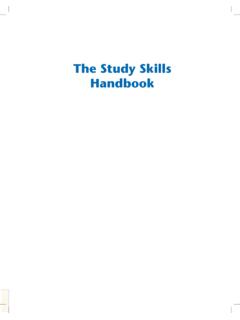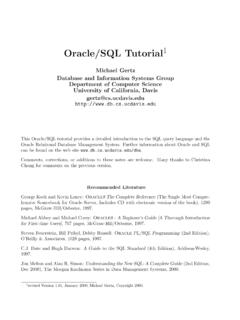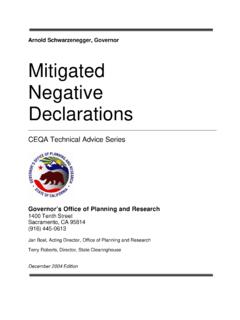Transcription of AIP Style Manual - AIP Publishing LLC
1 Style Manual Fourth Edition Prepared under the Direction of the AIP Publication Board American institute of Physics New York Searchable version provided with permission byKen Hanson; home page @ 1990 American lnstitute of Physics, Inc. This book, or parts thereof, may not be reproduced in any form without permission. Library of Congress Catalog Card Number 89-81 194 International Standard Book Number 0-8831 8-642-X American lnstitute of Physics 500 Sunnyside Blvd. Woodbury, NY I 1797 AIP Pub. Printed in the United States of America First edition, 1951 Second edition, 1959; revisions 1963,1965, 1967,1968,1969,1970,1973 Third edition, 1978 Fourth edition, 1 990 fifth printing, 1997 Preface The American Institute of Physics published its first Style Manual in 195 1. It was produced at the request of the Publication Board, which was made up of the editors of all Member Society journals, and with their approval. At that time there were five Member Societies, each Publishing one or two journals through the services provided by the Institute.
2 Now there are ten Member Societies, which between them publish about forty archival journals and sev- en translated journals. In addition, AIP itself now has a pub- lishing program that comprises seven archival journals, eighteen translated journals, and two magazines. Roughly half of the Member Society journals are still produced through AIP's Publishing services, as are all of AIP's own publications. But the remainder are published by their Member Society owners independently of AIP's copy- editing and composition facilities. The 1951 AIP Style Manual was followed by a second edition in 1959 and a third edition in 1978. This year, in the fourth edition, the emphasis is changing. The Style Manual is no longer tied closely to the procedures followed in the AIP journal production offices, but instead attempts to ac- commodate the different Style rules and procedures prac- ticed throughout the AIP "family" of journals. It presents advice which, if followed, should result in the preparation of clear, concise, and well organized manuscripts eminently suitable for submission to any physics or astronomy journal editor's office.
3 At the time of the third edition ( 1978 ) the text pages of many AIP and Member Society journals were composed by typewriter, because the monotype composition used earlier had become too expensive. Since then practically all journal pages have been produced by computer-controlled photo- composition, and at the present time a second generation of computer typesetting systems is coming into use. The next steps, which will be made possible by this new typesetting technology, will include the easy transfer of authors' own digitized text files to the publisher's composition system without rekeyboarding, and, eventually, the production of complete "electronic pages" that can be stored on disks or transmitted by telephone line. Given the accelerating march of new Publishing tech- nology, it appears probable that the next edition of the AIP Style Manual will have to follow this one at a closer interval than has been the case with the previous editions.
4 The number of members of the AIP staff and of the Publication Board, both past and present, to whom the Insti- tute is indebted for their various contributions to this Man- ual is so great that it would take another section to name them all. Instead, therefore, a hearty "Thank you" to all of you from today's AIP and Publication Board. Robert T. Beyer Chair, AIP Publication Board I. Summary information for journal contributors A. MANUSCRIPT PREPARATION The information on this and the following page is a sum- mary of the advice given in detail in later sections of the Manual . Authors should note in addition that the journal for which they are writing may have particular requirements that differ in detail from those presented here. Consult the "Information for Contributors" page in the selected journal. In general, a study of the form and Style of published articles is the best guide to the requirements of individual journals. ed abstracting journals.
5 For this reason the abstract should not contain literature citations that refer to the main list of references attached to the complete article, nor allusions to the illustrations. Define all nonstandard symbols and abbre- viations. Do not include tabular material or illustrations of any kind. Avoid "built-up" equations that cannot be ren- dered in linear fashion within the running text. Type or print the abstract double spaced, preferably as a single paragraph. It should be about 5% of the length of the article, but not more than about 500 words. 3. Mathematics 1. General instructions Manuscripts must be in English (American usage and spelling), typed or printed double spaced throughout, on white paper preferably 2 15 X 280 mm ( 84 x 1 1 in. ) in size. Use one side of the page only, leaving wide margins at both sides and at top and bottom. Indent paragraphs. Number all pages consecutively, beginning with the title and abstract page.
6 Submit the original manuscript with production-quali- ty figures and one or more duplicate copies (including clear copies of figures), as required by the editor of the journal to which the manuscript is submitted. Manuscripts that cannot be read or easily understood will be returned to the author. Include the following material, in the order shown: a. title, with the first word capitalized, b. authors' names, c. authors' affiliations, including adequate postal addresses, d. abstract, preferably on the first page with the title, e. appropriate indexing codes selected from the Physics and Astronomy Classification Scheme (see Appendix I ) , f. text, g. acknowledgments, h. appendixes (if necessary ) , i. collected references in the order in which they are cited, j. tables, each with a caption, k. collected figure captions, 1. figures, m. if necessary, supplementary material for deposit in AIP's Physics Auxiliary Publication Service (see Appendix J).
7 Ask someone else to read the manuscript, however satis- fied you may be with its clarity and accuracy. A second pair of eyes can often find a typographical error or unclear state- ment that the author missed. 2. Abstract An abstract must accompany every article. It should be a concise summary of the significant items in the paper, in- cluding the results and conclusions. In combination with the title it must be an adequate indicator of the content of the article, because it will appear separated from the text and illustrations in electronic bibliographic databases and print- Type or print as much of the mathematical material as possible. Handwritten material must be neatly lettered in black ink. When confusion is possible, distinguish between similar-looking letters, numbers, and special symbols when they first occur [for example, the number "one" ( 1 ) and the letter "ell" (1); the Roman letter "kay" (k) and the Greek letter "kappa" (K); the "proportional to" symbol ( a ) and the Greek "alpha" (a), and so on].
8 Write the identification of these symbols in the margin where they first occur. Notation should be clear, as simple as possible, and con- sistent with standard usage. Display all numbered equations on separate lines set off from the text above and below. Con- secutive numbering of equations throughout the text is gen- erally preferred, in which case use arabic numbers in paren- theses flush right with the right margin. In some journals, numbering by section may be permitted, with the section number made part of the equation number. 4. Footnotes and references Type or print all footnotes (including references) in or- der of citation as a separate double-spaced list at the end of the manuscript, before the tables and figures. Start with foot- notes to the title, authors' names, and authors' affiliations; for these, some journals use a sequence of letter superscripts, some use a series of symbolic indices (asterisks, daggers, etc.). Check a recent issue of the journal to which the paper is to be submitted for the correct form.
9 Acknowledgments of financial support should be made in the acknowledgments section of the paper, not as footnotes to the title or to an author's name. For literature references in the body of the paper, most AIP and Member Society journals prefer to number them in order of appearance and list them in that order at the end of the article. (Some journals will also per- mit references to be cited in text by author and year only, with the reference list arranged alphabetically by author's name; see See. I1 C 10 for a more complete discussion.) In the usual case, where literature citations are numbered, use superscript arabic numerals appearing in consecutive nu- merical order through the text. The names of authors in the reference list should be given in the form in which they ap- pear on the title page of the cited work, with the family name ("surname") last. For journal references use the standard abbreviations for journal names given in Appendix G; give the volume number, the first page number, and the year of publication.
10 For model footnotes and references see Table 11. 5. Tables Tabular material more than four or five lines long should be removed from running text and presented as a separate table. Type each table double spaced on a separate page after the list of footnotes and before the collected figure captions. Use roman or arabic numerals, according to the usage in the selected journal. Be sure to cite every table in the text. Each table must have a caption that is complete and intelligible by itself without references to the text. Column headings should be clear and concise, with appropriate units. Type or print a double horizontal line below the caption, a single line below the column headings, and another double line at the end of the table. For footnotes to a table use the sequence of letters a, b, c, etc., with a new sequence for each table. Place the footnotes themselves below the double line at the end of the table. For a model table, see Table 111.







